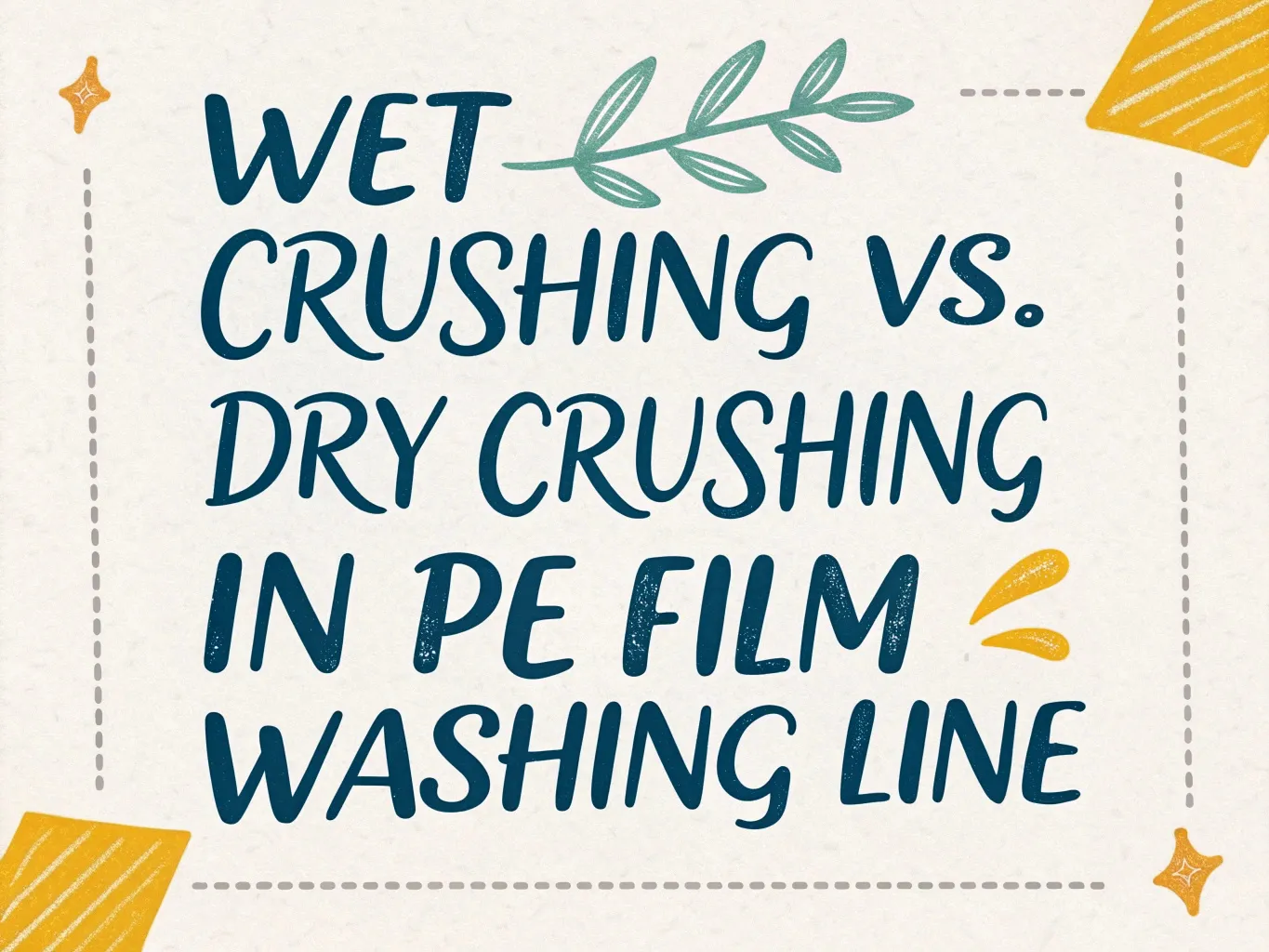Operational Efficiency
Wet crushing integrates water during size reduction, cutting PE films into flakes while simultaneously pre-washing contaminants. This dual-action process reduces friction-induced blade wear by up to 40% compared to dry methods. Water lubrication allows continuous operation at higher throughputs—up to 2,000 kg/h in industrial setups—without frequent blade replacements.
Dry crushing operates without water, increasing blade-to-material friction and accelerating wear. Facilities using dry systems report 30% shorter blade lifespans and reduced capacity due to heat buildup. Dust generation during dry crushing also necessitates additional air filtration systems to meet workplace safety standards.
Contaminant Management
Wet systems remove 60–80% of surface dirt, adhesives, and organic residues during crushing through water spray, reducing downstream washing loads. Pre-washed flakes require less aggressive friction washing, preserving material integrity for high-value recycled products like food-grade packaging.
Dry-crushed flakes retain contaminants, demanding intensive washing stages. Facilities using dry methods report 15–20% higher energy consumption in subsequent hot-wash cycles to achieve comparable cleanliness. Residual glue and labels in dry-processed flakes also increase filter clogging risks in extrusion equipment.
Cost Implications
- Capital Costs: Dry systems require lower initial water infrastructure investment but incur higher expenses for dust explosion prevention (e.g., spark detection, inerting systems).
- Operational Costs: Wet crushing reduces blade replacement frequency by 50% and lowers electricity demand in downstream washing stages. Dry methods face 25% higher maintenance costs due to abrasive wear and dust-related equipment damage.
- Water Management: Closed-loop water systems in modern wet lines recycle 90% of process water, minimizing consumption to 5–6 tons/hour. Dry systems avoid water costs but generate airborne particulates requiring costly mitigation.
Environmental Impact
Wet crushing aligns with circular economy goals by producing cleaner flakes suitable for closed-loop recycling. Life-cycle assessments show wet-processed PE films achieve 30% lower carbon footprints than dry methods when accounting for reduced energy use in pelletizing.
Dry crushing generates microplastic dust, posing inhalation risks and requiring hazardous waste disposal. Studies indicate dry systems produce 2–3 times more non-recyclable waste from contaminated filters and settled dust.
Application-Specific Recommendations
- High-Contamination Films (e.g., agricultural mulch): Wet crushing is mandatory to remove embedded soil and pesticides.
- Low-Moisture Films (e.g., stretch wrap): Dry crushing may suffice if paired with electrostatic separators for label removal.
- Food-Grade Recycling: Wet systems dominate due to superior cleanliness, meeting FDA and EU compliance standards.
Industry Trends
Advanced wet lines now integrate AI-powered water quality sensors and automated blade wear detection, achieving 95% uptime. Dry systems remain niche for arid regions but face regulatory pressure due to particulate emissions.
This analysis underscores wet crushing as the benchmark for efficiency and sustainability in PE film recycling, while dry methods remain limited to specialized low-contamination applications.


